
BLOCK PRINTING
Basic Techniques for Linoleum and Wood
Sandy Allison, editor
instruction and art by Robert Craig
photographs by Alan Wycheck STACKPOLE
BOOKS
Beginnings
B lock printing is a centuries-old art form first practiced in Japan, China, India, Korea, and elsewhere. It can be used to create fine art prints, illustrations, greeting cards, gift wrapping, posters, advertisements, and numerous other graphic works on paper. It can be done on fabric as well. While many block prints have a distinctive look and spirit, they can vary widely, from simple and bold to delicate and filigreed. Traditionally, blocks for printing have been carved from wood, but they can also be created from linoleum, which is relatively inexpensive and readily available. (Both materials are suitable for making fine art prints: Pablo Picasso and Henri Matisse worked extensively with linoleum, as did the German Expressionists and artists at the Grosvenor School of Modern Art in London.) Tools and carving techniques for wood and linoleum are similar but differ in important ways; hand-printing techniques are basically the same.
This book covers the basics of working with both linoleum and wood. It starts with selecting sketches that would work well as block prints and demonstrates an easy way to transfer sketches to the surface of a block. It covers carving tools and the proper ways to carve linoleum then moves on to inking techniques. Printing by hand and pulling a print are covered in detail, as are editioning and registration and clean-up techniques. Selecting wood and the tools and techniques for carving it are also described, as is a way to make multicolored reduction prints. The book also describes the different types of paper suitable for printmaking.
It ends with a gallery of finished prints that include notations by the artist, printmaker Robert Craig. Getting started block printing is easy, and the materials and tools are readily available. As with any craft, its best to start small at first then tackle larger and more complex projects. This book will cover everything you need to know to make original and practical works of art.
Transferring
an Image
L inoleum for printing is available at most art stores and craft centers or online and usually comes mounted on a 3/4-inch-thick block of plywood, ready to carve. The linoleum itselfa mixture of cork and linseed oilhas no grain, so its easy to cut in any direction.
It can hold fairly fine detail. Linoleum blocks are often gray (so-called battleship gray) or tan. The white material shown here is printing foamvery easy to cut with a pencil or skewer and inexpensive, it is good for practice or younger artists. 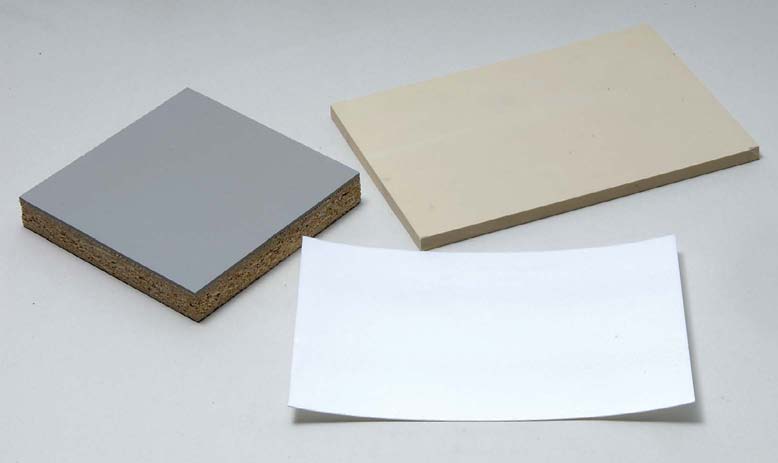
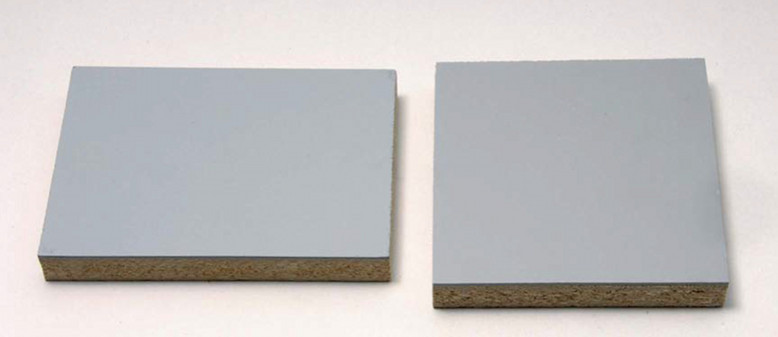 Linoleum blocks come in a variety of standard square or rectangular sizes: 4 by 5 inches, 5 by 7, 8 by 10, and 9 by 12 are most common. If you want to make a print thats not a standard size, its a simple matter to cut down a standard linoleum block using a handsaw or table saw. Battleship gray linoleum also comes unmounted in square or rectangular pieces or rolls.
Linoleum blocks come in a variety of standard square or rectangular sizes: 4 by 5 inches, 5 by 7, 8 by 10, and 9 by 12 are most common. If you want to make a print thats not a standard size, its a simple matter to cut down a standard linoleum block using a handsaw or table saw. Battleship gray linoleum also comes unmounted in square or rectangular pieces or rolls.
The advantage to buying this form is that its slightly cheaper and more easily cut down. Unmounted linoleum is almost always mounted before carving, however, by gluing it to a plywood block using a heavy-duty adhesive.
Linoleum Flooring
The material on the surface of linoleum blocks is similar to the true linoleum still used as a flooring material. But much of what is today thought of as flooring linoleum is actually vinyl and nothing like printing linoleum. Early linocut artists used true linoleum flooring material to make prints, and its possible for you to do the same.
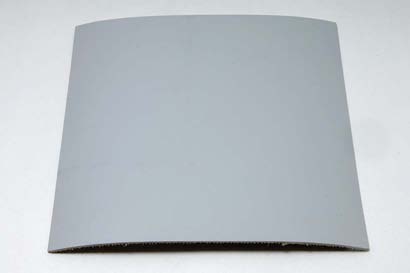
Block printing linoleum also comes in a gold-cut variety.

Block printing linoleum also comes in a gold-cut variety.
This material is slightly softer than battleship gray and a touch easier to cut. Like the gray, it has no grain. Alternative block-cutting products are also available; many of these are even softer than gold-cut but cant be worked to show fine detail. 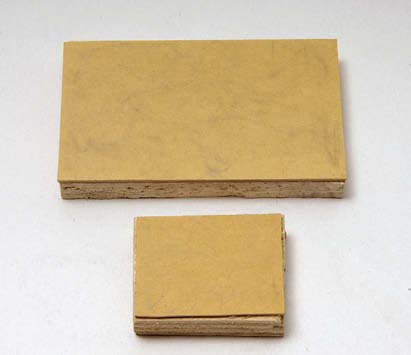
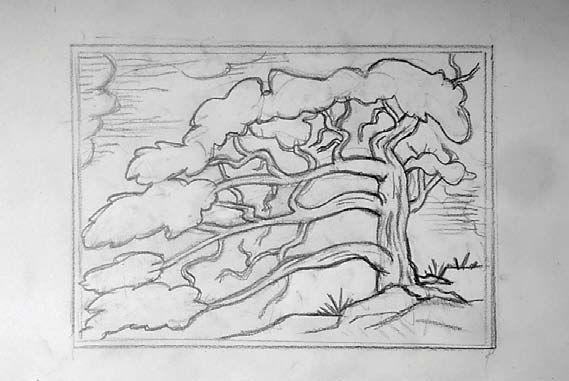 A comparison of sketches and finished prints helps show the range of subjects that can be rendered as prints, and how sketches are altered during carving. Note how this stand of trees in the snow was sketched so it could be reproduced as a block print. The shadows and background trees are solid black with highlights cut out to indicate texture.
A comparison of sketches and finished prints helps show the range of subjects that can be rendered as prints, and how sketches are altered during carving. Note how this stand of trees in the snow was sketched so it could be reproduced as a block print. The shadows and background trees are solid black with highlights cut out to indicate texture.
The places where the branches cross in front of other branches and the sky are solid black so they dont disappear. When you work up a sketch for a print, think carefully how each element will be rendered in a print. 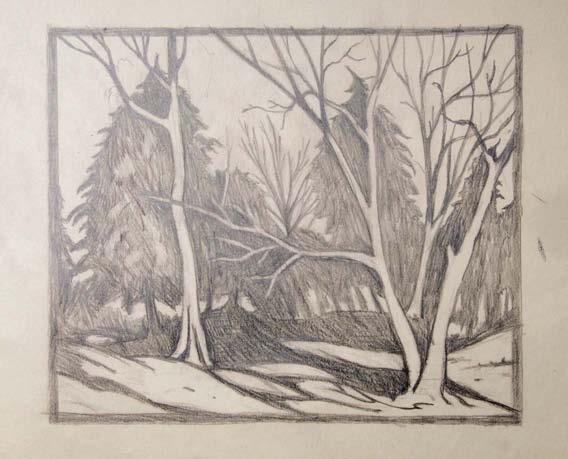
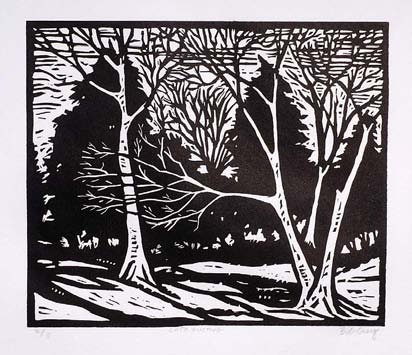 Almost any sketched image can be made into a block print, but all will require at least some abstraction to be rendered successfully. This pencil drawing of a juniper tree features a simplified branching pattern, clumps of foliage instead of individual leaves, and the suggestion of a darkening sky around the clouds. The sketch must be rendered in black and white (if not literally, at least metaphorically); you must decide for every stroke, line, dot, or segment whether it will print or nottheres no in-between. If its going to print, it must not be cut away.
Almost any sketched image can be made into a block print, but all will require at least some abstraction to be rendered successfully. This pencil drawing of a juniper tree features a simplified branching pattern, clumps of foliage instead of individual leaves, and the suggestion of a darkening sky around the clouds. The sketch must be rendered in black and white (if not literally, at least metaphorically); you must decide for every stroke, line, dot, or segment whether it will print or nottheres no in-between. If its going to print, it must not be cut away.
If its cut away, it will not print. 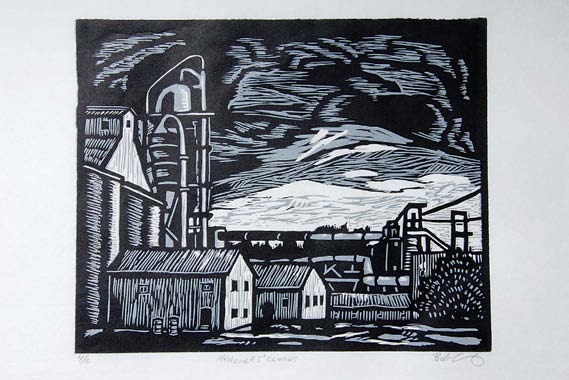
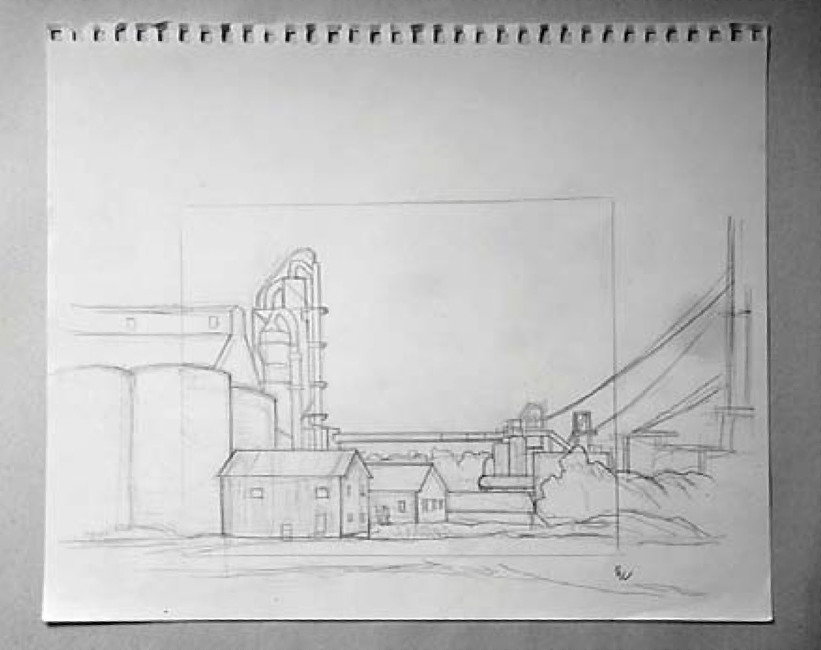
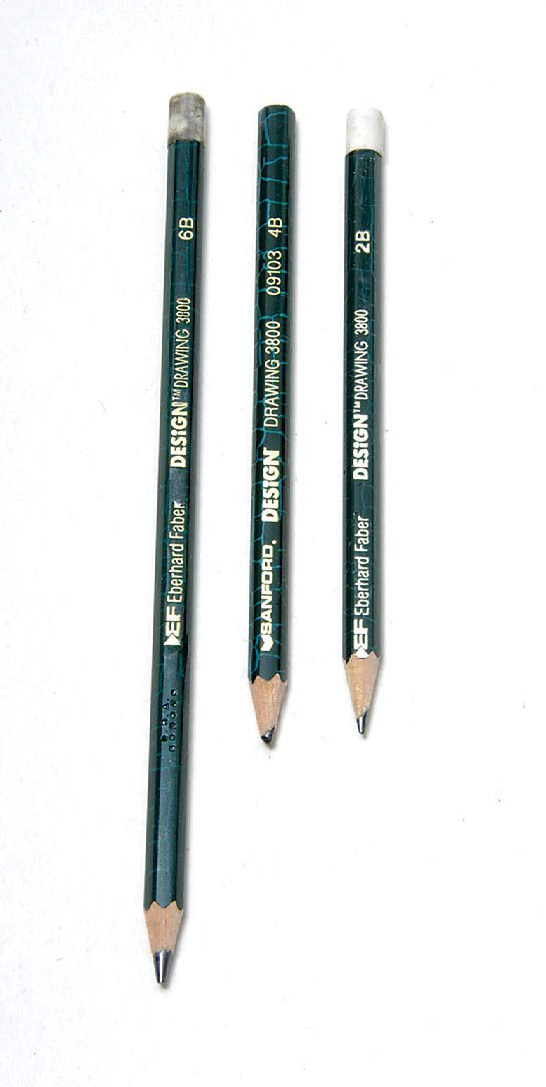 Even though its printed in two colors, this industrial scene was abstracted before it could be suitably rendered in ink. The shadows on the buildings and the stormy clouds are represented by carved bands of varying widths. The trees are solid with carved streaks indicating branches and leaves. The large pipe was left solid where it crosses the sky and cut away where it crosses the background trees.
Even though its printed in two colors, this industrial scene was abstracted before it could be suitably rendered in ink. The shadows on the buildings and the stormy clouds are represented by carved bands of varying widths. The trees are solid with carved streaks indicating branches and leaves. The large pipe was left solid where it crosses the sky and cut away where it crosses the background trees. 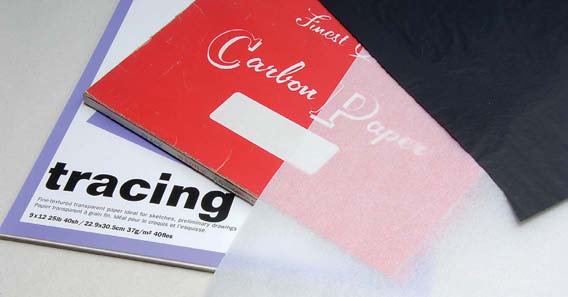 Tracing paper is used to transfer a pencil sketch to the surface of a linoleum block. (An alternate method described on page 10 uses carbon paper). (An alternate method described on page 10 uses carbon paper).
Tracing paper is used to transfer a pencil sketch to the surface of a linoleum block. (An alternate method described on page 10 uses carbon paper). (An alternate method described on page 10 uses carbon paper).


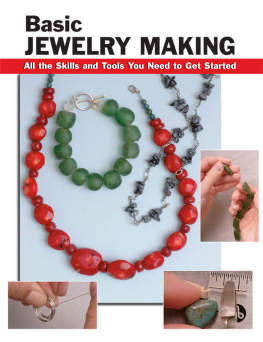

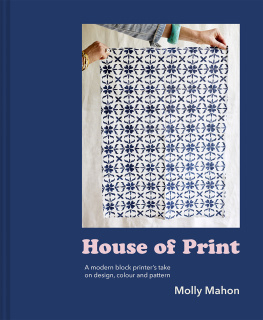
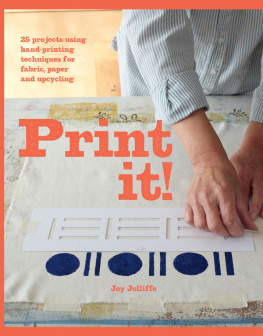

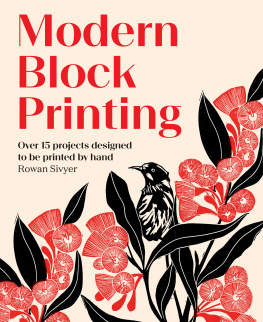
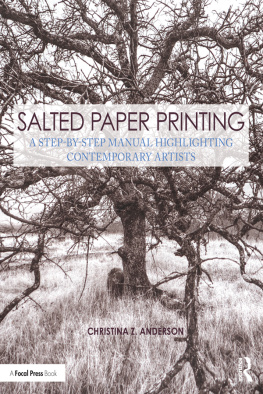
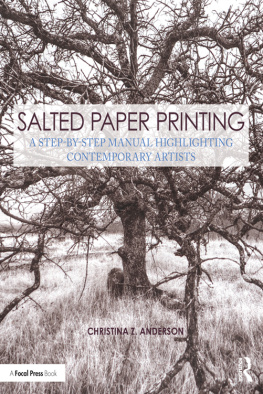
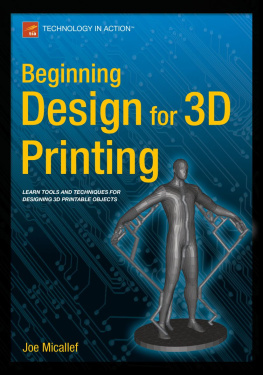


 Linoleum blocks come in a variety of standard square or rectangular sizes: 4 by 5 inches, 5 by 7, 8 by 10, and 9 by 12 are most common. If you want to make a print thats not a standard size, its a simple matter to cut down a standard linoleum block using a handsaw or table saw. Battleship gray linoleum also comes unmounted in square or rectangular pieces or rolls.
Linoleum blocks come in a variety of standard square or rectangular sizes: 4 by 5 inches, 5 by 7, 8 by 10, and 9 by 12 are most common. If you want to make a print thats not a standard size, its a simple matter to cut down a standard linoleum block using a handsaw or table saw. Battleship gray linoleum also comes unmounted in square or rectangular pieces or rolls. Block printing linoleum also comes in a gold-cut variety.
Block printing linoleum also comes in a gold-cut variety. 
 A comparison of sketches and finished prints helps show the range of subjects that can be rendered as prints, and how sketches are altered during carving. Note how this stand of trees in the snow was sketched so it could be reproduced as a block print. The shadows and background trees are solid black with highlights cut out to indicate texture.
A comparison of sketches and finished prints helps show the range of subjects that can be rendered as prints, and how sketches are altered during carving. Note how this stand of trees in the snow was sketched so it could be reproduced as a block print. The shadows and background trees are solid black with highlights cut out to indicate texture.
 Almost any sketched image can be made into a block print, but all will require at least some abstraction to be rendered successfully. This pencil drawing of a juniper tree features a simplified branching pattern, clumps of foliage instead of individual leaves, and the suggestion of a darkening sky around the clouds. The sketch must be rendered in black and white (if not literally, at least metaphorically); you must decide for every stroke, line, dot, or segment whether it will print or nottheres no in-between. If its going to print, it must not be cut away.
Almost any sketched image can be made into a block print, but all will require at least some abstraction to be rendered successfully. This pencil drawing of a juniper tree features a simplified branching pattern, clumps of foliage instead of individual leaves, and the suggestion of a darkening sky around the clouds. The sketch must be rendered in black and white (if not literally, at least metaphorically); you must decide for every stroke, line, dot, or segment whether it will print or nottheres no in-between. If its going to print, it must not be cut away.

 Even though its printed in two colors, this industrial scene was abstracted before it could be suitably rendered in ink. The shadows on the buildings and the stormy clouds are represented by carved bands of varying widths. The trees are solid with carved streaks indicating branches and leaves. The large pipe was left solid where it crosses the sky and cut away where it crosses the background trees.
Even though its printed in two colors, this industrial scene was abstracted before it could be suitably rendered in ink. The shadows on the buildings and the stormy clouds are represented by carved bands of varying widths. The trees are solid with carved streaks indicating branches and leaves. The large pipe was left solid where it crosses the sky and cut away where it crosses the background trees.  Tracing paper is used to transfer a pencil sketch to the surface of a linoleum block. (An alternate method described on page 10 uses carbon paper). (An alternate method described on page 10 uses carbon paper).
Tracing paper is used to transfer a pencil sketch to the surface of a linoleum block. (An alternate method described on page 10 uses carbon paper). (An alternate method described on page 10 uses carbon paper).